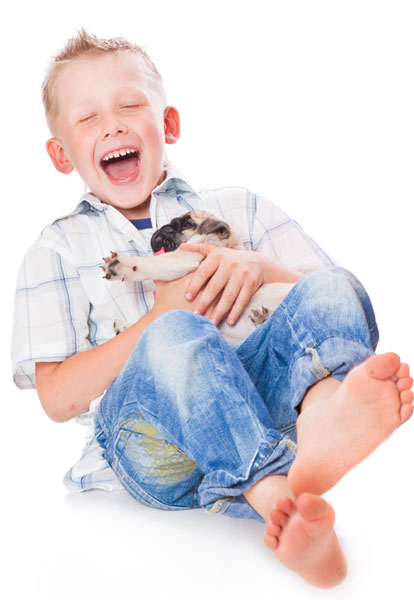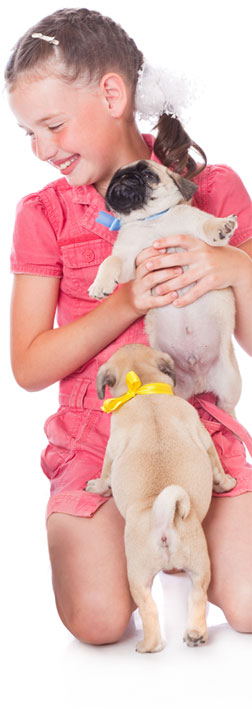If you see this icon in a fact sheet summary you may be dealing with a life threatening issue. Consult a veterinarian immediately.
Use our webform to ask a question or book an appointment

CONJUNCTIVITIS
Conjunctivitis is an inflammation of the conjunctiva, the thin, pink membranes surrounding the eye, lining the globe, inner eyelids and third eyelid and forming a seal with the inner surface of the eyelids. The conjunctive membrane becomes swollen and reddened, often making it more visible. Conjunctivitis can affect one or both eyes in both dogs and cats.
In dogs, most forms of conjunctivitis are allergy based or are bacterial infections. In cats, viral (herpes), bacterial (Chlamydia) or mycoplasma (similar to bacteria) infections are more prevalent. Another cause is ‘dry eye,’ where tear production is decreased or absent. There are many other less common causes.
Long haired cats may be more susceptible to conjunctivitis as their eyes are more prominent and less protected by the eye socket, or there may be abnormalities in tear drainage causing an overflow of tears.
SEVERITY: Moderate. Can be easily treated in most cases.
- Red eyes
- Swollen conjunctivae
- Mucky discharge
- Rubbing or scratching at eyes
- in dry eye, dogs show a thick, ropy discharge and the eyes look dry
The condition is quickly diagnosed by simple physical examination. The condition is not life threatening and can be treated. However, it does cause considerable discomfort to the animal and, left too long, the infection can persist and worsen. If your pet’s eyes are swollen and you can see a discharge you should make an appointment for an examination at the hospital. The sooner conjunctivitis is diagnosed the easier it is to treat and clear up.
In most cases, antibiotic drops or ointments applied directly into the eye are the usual treatments. For allergic conjunctivitis, anti-inflammatory drops are used, but occasionally oral antibiotics/anti-inflammatories are also required. Some conditions require a more intense action, such as swabs of the cornea to diagnose the cause.
An important part of treatment is cleaning of the eyes. Often thick discharges become stuck to your pet’s fur and are difficult to remove and uncomfortable to the patient. This can be done at home. The best way to bathe the eyes is as follows:
1. Wet a wad of cotton wool in warm saline water (warm enough that you can still touch it).
2. Squeeze out some of the water and place over the animal’s closed lids. Most animals don’t object.
3. Hold the pad there for 10 seconds to dissolve and loosen the discharge.
4. Wipe away the discharge, in one movement, from the inside corner of the eye towards the outside. Repeat as necessary until all discharge is cleaned away.
Bathing the eye in this way soothes your pet’s irritated eyes, removes discharge and the remnants of the last application of ointment, improves the blood supply to the area and aids healing.
Most ointments need to be administered at least twice a day. Drops need to be given more frequently and so are less practical. Unfortunately, some treatments cause transient discomfort after administration, meaning two people are required, one to hold the animal and the other to apply the treatment.
Liquid preparations can be applied directly onto the surface of the eye, 1 or 2 drops per eye is usually sufficient. Ointment is applied across the surface of the eye, about a centimetre per eye. The eyelids are then closed to spread the ointment over the entire surface of the eye. Some people find drops easier to administer. If you have any doubts as to how to give the medication prescribed then don’t be afraid to ask us for a demonstration.
Allergic conjunctivitis usually resolves quickly but, like all allergies, may return at certain times of year or on exposure to the allergen, especially if the allergen is pollens in the air.
Infectious conjunctivitis has a good prognosis, however dogs and cats often transfer the infection from one eye to the other, or to other dog or cat members of the household.
Dry eye requires lifelong treatment, but the eyes can be made much more comfortable.
MORE DISEASES OF DOGS
DOGS: ADVICE FOR EMERGENCIES




